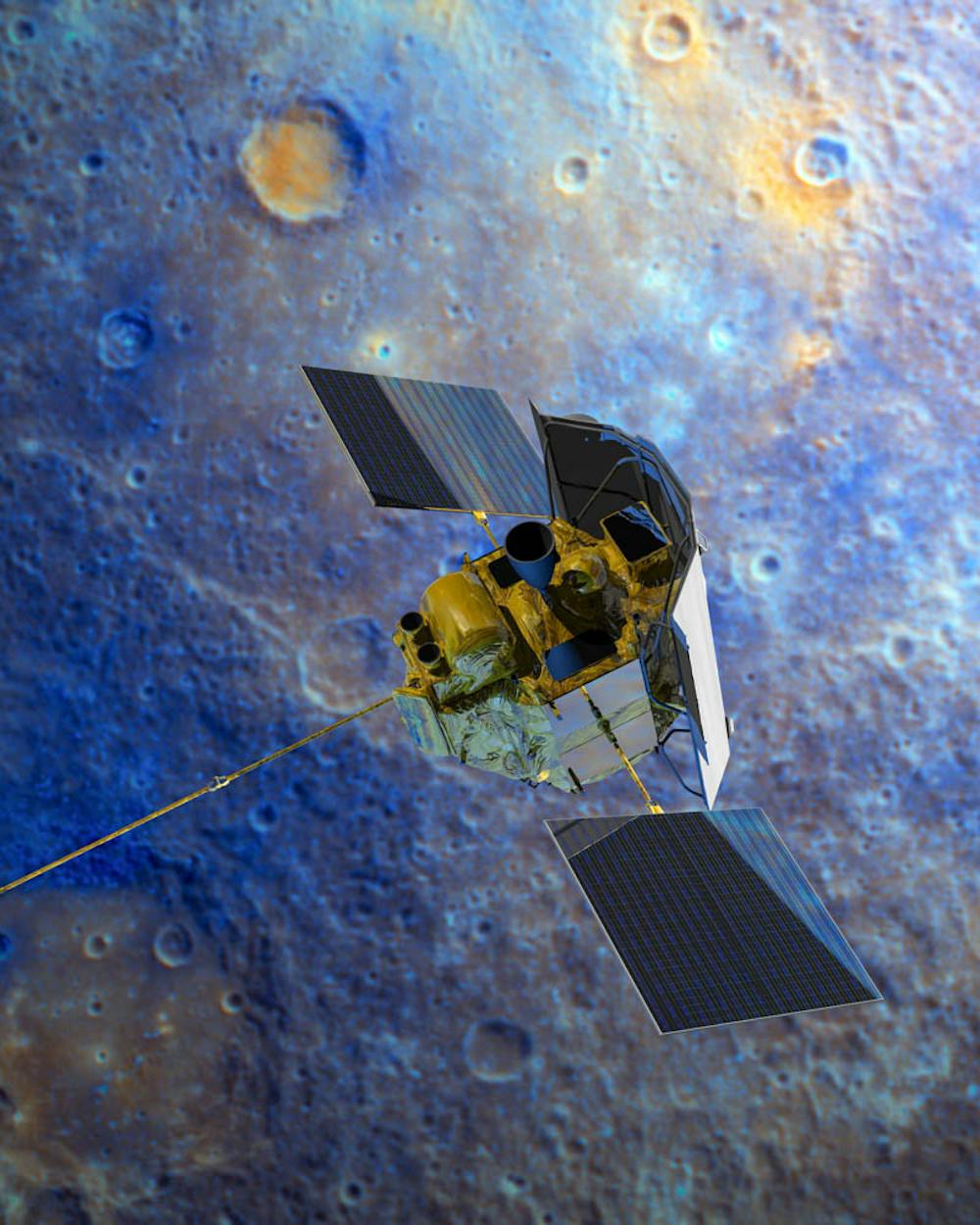The planet closest to the sun might have large areas of previously undiscovered ice on its surface. A new study by University researchers suggests that Mercury’s north pole is home to more ice than previously thought.
Using data collected from NASA’s MESSENGER spacecraft, the team not only confirmed the presence of ice in craters already suspected to contain the substance, but also found new, smaller icy locations on the surface of the planet.
Prior to this analysis, seven craters on Mercury were thought to contain ice on the surface. New findings confirmed past evidence indicating the presence of ice for five such craters, but did not show evidence for surface ice in the remaining two,, said Ariel Deutsch ScM’17 GS, lead author of the study. The team also found evidence for ice in three more craters, totalling roughly 3,400 square kilometers in new icy surface area — slightly bigger than the area of Rhode Island. These bring the total number of large craters containing surface ice to eight.
Even more surprising, Deutsch said, was the discovery of smaller-scale patches of ice. Four smaller deposits were found, together covering approximately 50 square kilometers — roughly the size of Providence.
The planet closest to the sun might seem an unlikely place to find ice. But certain areas near the planet’s poles can remain cold enough to harbor it, according to Carolyn Ernst, planetary scientist at Johns Hopkins University Applied Physics Laboratory. These exist in so-called “permanently shadowed areas,” where, due to Mercury’s lack of tilt, the surface of the planet receives no direct sunlight.
Evidence that water ice could exist in such permanently shadowed areas was first suggested by Earth-based radar long before MESSENGER was launched. With MESSENGER, more data was collected pointing to the conclusion that ice exists on the planet. Data recorded by the craft’s laser altimeter gave scientists information about Mercury’s surface, which they used to locate areas that were cold enough to sustain ice. In addition to giving researchers clues about cold areas about the topography of Mercury, the laser altimeter was also able to tell them what parts of the surface reflected in ways consistent with ice.
The altimeter reported different values for terrains of different materials, Deutsch said. “Ice is very bright, and so, if you’re flying over that, it sticks out to you.”
The team worked to interpret this reflectance data toward the north pole of the planet, finding new icy areas in both large craters and smaller patches, said Gregory Neumann ScM’91 PhD’93 P’20, NASA research scientist who co-authored the study along with Deutsch and Professor of Geological Sciences Jim Head PhD’69. They found that their newly interpreted data suggested that ice-like reflectance patterns coincided with areas on the surface predicted to be cold enough to sustain ice. “This confirmed what we had modeled geophysically, … but which we didn’t have the actual direct evidence of,” Neumann said.
The results of the study raise new questions about how Mercury’s ice got there in the first place. “The fundamental question is: How did the ice get there, and when?” Neumann said, adding that scientists are leaning toward the theory that it was placed there by comets colliding with the planet. It is unclear why we don’t see such large areas of surface ice on our own moon, Neumann said.
According to Ernst, the Moon contains permanently shadowed craters similar to Mercury’s and finding large areas of ice on the lunar surface could be of practical importance for future lunar missions. “It has implications for the Earth as well,” Ernst said, adding that studying ice on other bodies in our solar system could potentially provide clues about how Earth got its oceans and came to sustain life.
In the study, different pieces of evidence came together and led to the same conclusion, Ernst said. “That’s what you really want, is to look at something several different ways and come up with the same answer.”
The researchers anticipate that the BepiColumbo spacecraft, set to launch for Mercury in October of next year, will provide an even better look at more of Mercury’s surface, answering still unresolved questions about the enigmatic planet.





